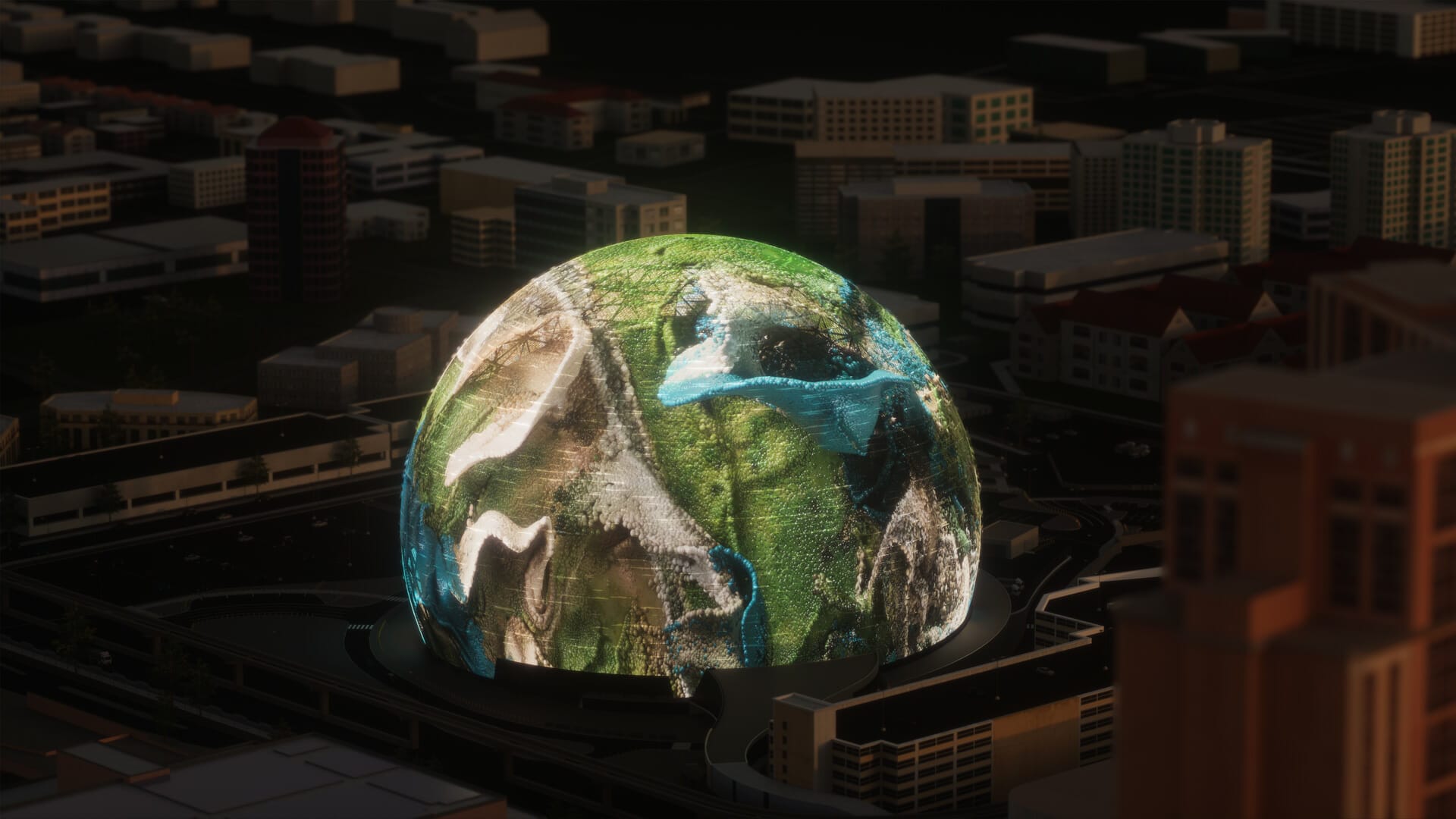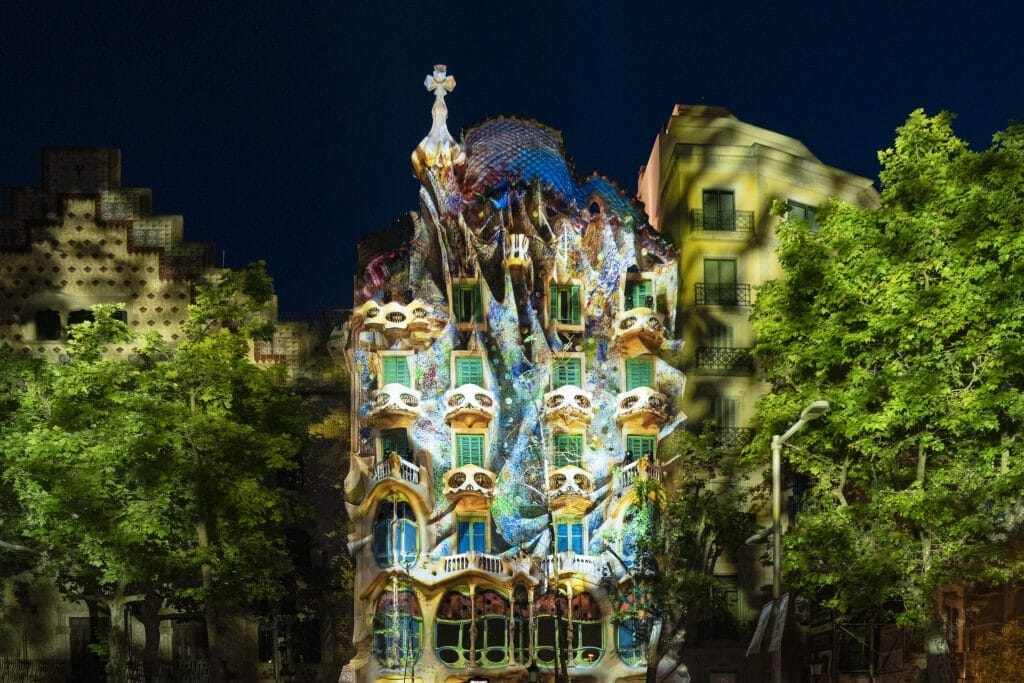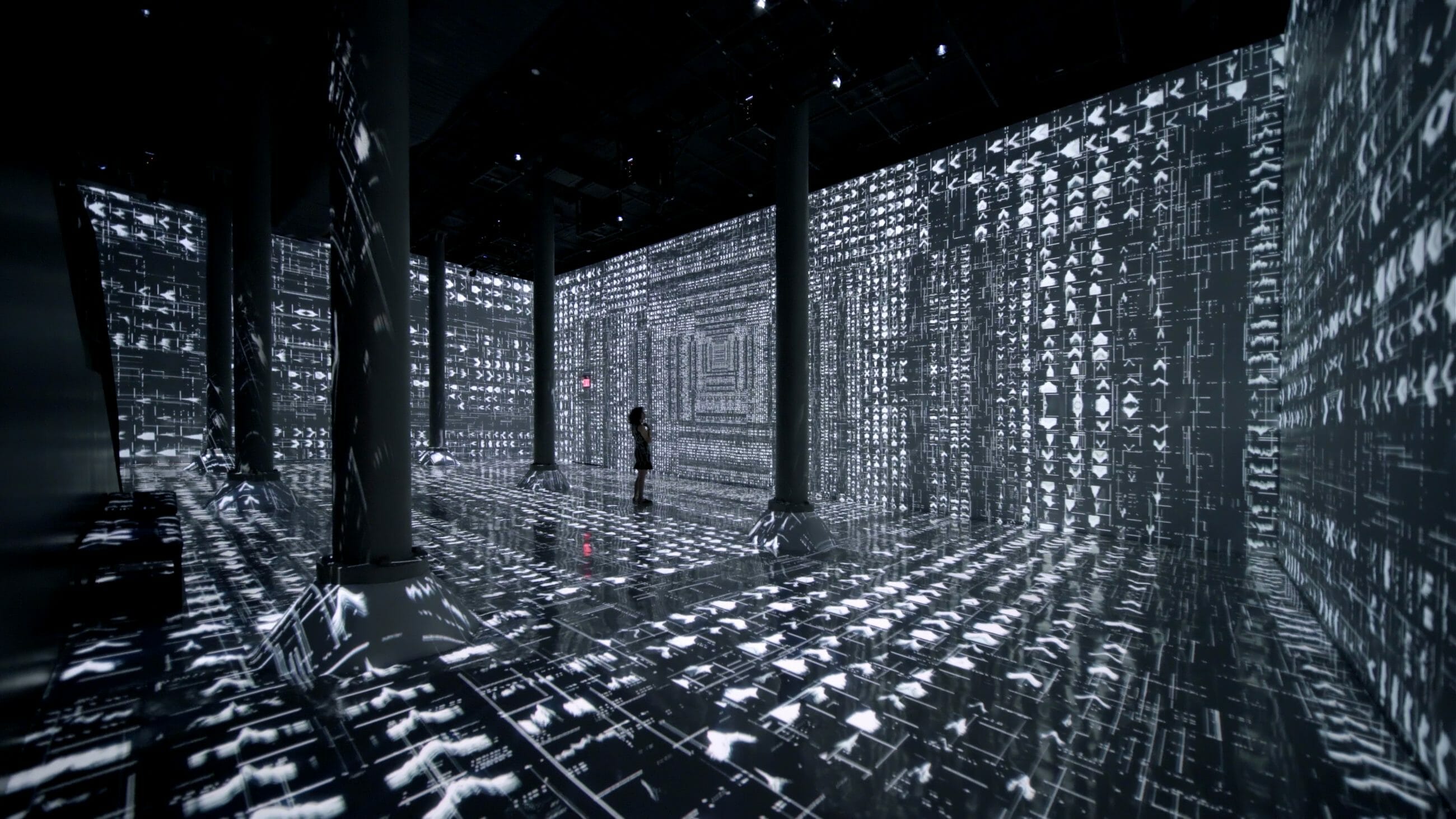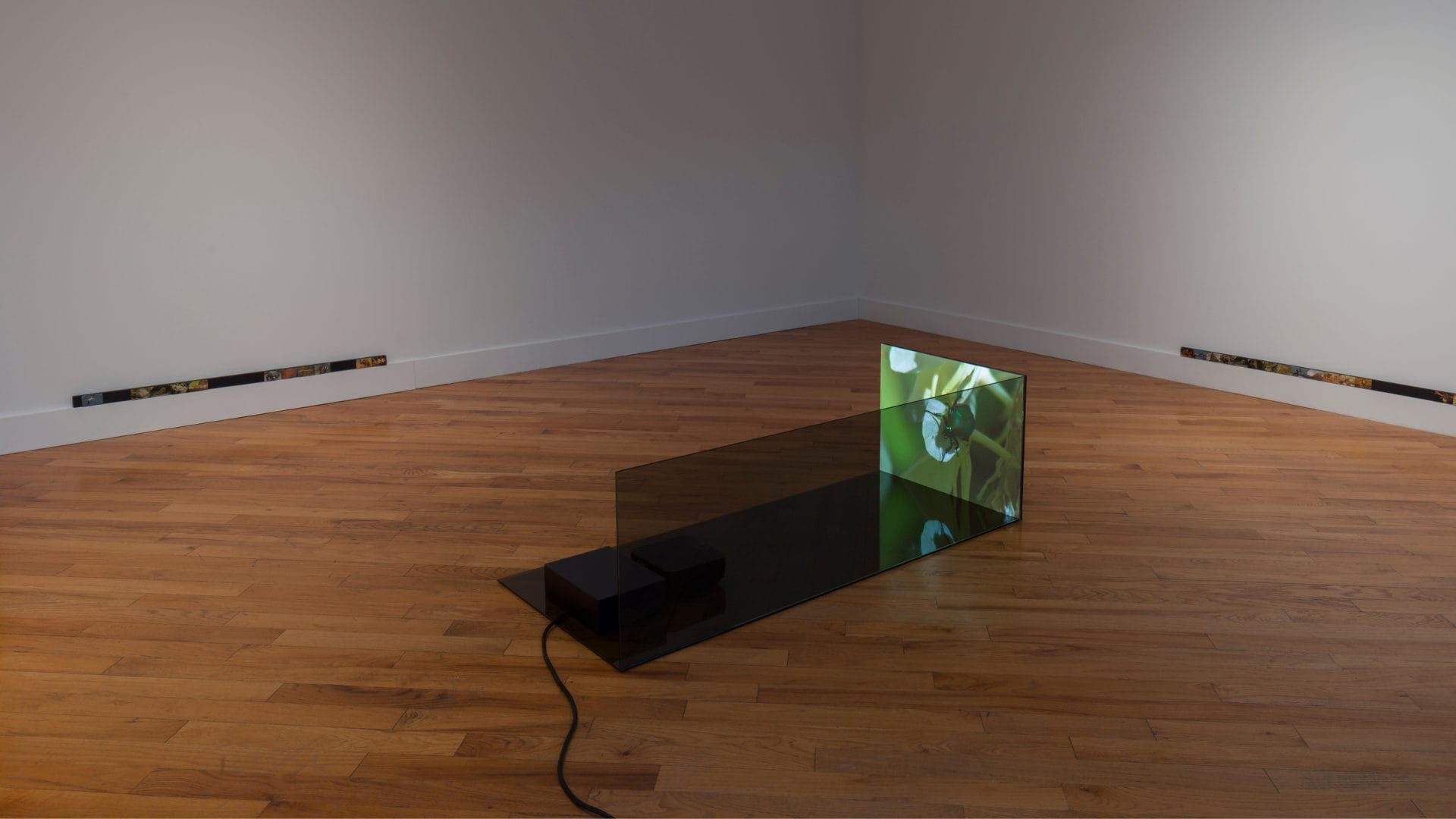
Refik Anadol: Deciphering Machine Dreams
Art has always been humanity’s conduit to understanding the enigma of existence, our dreams, and our shared memories. But, what happens when machines enter the scene and begin to ‘dream’? Refik Anadol‘s “Machine Hallucinations: The Sphere” navigates this uncharted territory.

Convergence of Art, Technology, and Human Cognition: A New Era
In the rapidly evolving fields of artificial intelligence (AI) and machine learning, the realms of technology, art, and human cognition — previously isolated from one another — are melding together in unprecedented ways. A fusion that is not only reshaping the landscape of human-machine interactions but also revolutionizing the way we perceive art and consciousness.
Machine learning has evolved from its rudimentary role of recognizing patterns and predicting outcomes. It has transformed into a canvas for art, where algorithms and neural networks give rise to machine dreams: a synthesis of human imagination and computational precision that creates digital landscapes not merely mirroring but reinterpreting our reality.
And at the heart of this convergence lies human cognition, our inherent ability to perceive, understand, and react.
After all, what does it mean to dream, remember and exist today?
Machines learn from the data we generate, emulating our learning processes and creativity; a dynamic that engenders a fascinating reciprocity, where the ‘dreams’ of machines reflect our collective memory and consciousness, compelling us to revisit our understanding of perception, memory, and existence.
In this fusion of technology, art, and cognition, machines not only contribute to our collective memory but also reshape our comprehension of physical spaces. Moreover, through their ‘dreams’, they redefine the boundaries of art.
By grounding ourselves in the pioneering work of media artist Refik Anadol, we explore the implications of these machine dreams, pondering what it means for a machine to perceive, remember, and dream, and how these digital narratives enhance our shared cultural memory.

The Machine’s Canvas: Refik Anadol ‘s Vision of AI and Art
Internationally renowned media artist and director, Refik Anadol (b. 1985, Istanbul, Turkey), has established himself as a pioneer in the aesthetics of machine intelligence.
His impactful body of work is grounded in his fascination with the shifting perception and experience of time and space in a world dominated by machines. In utilizing machine learning and neural networks, he transforms vast data into stunning visual masterpieces, revealing an extraordinary realm where technology and consciousness converge.
By tapping into the potential of the digital age and machine intelligence, he has developed a new aesthetic with influences encompassing digital futurism and architectural theories, resulting in immersive, dream-like installations that affect our collective spatial and temporal perceptions.
These inspirations, intertwined with the burgeoning capabilities of AI, underpin his distinctive artistic approach. The work of Anadol exemplifies this singular style, in which machines become collaborators rather than just tools in the creative process.
Refik Anadol’s installations present a hypnotizing interpretation of the world from a machine’s perspective, bridging the gap between binary code and human imagination. These machine dreams echo our very own dreams, refracted through the lens of non-human consciousness.

Interpreting Consciousness: A Deeper Look into Refik Anadol ‘s Creations
As we delve deeper into Refik Anadol’s work, we explore a complex understanding of consciousness—an innately personal phenomenon. His installations provoke us to evaluate the nature of consciousness through the unique lens of machine dreams—a non-human form of perception and ‘memory’. While machines may lack human consciousness, their capability to learn from data, generate unique outputs, and astonish us with their creations propels us to reconsider the parameters of consciousness.
This investigation also leads us to ponder, do these machine dreams represent a form of consciousness? Despite lacking the self-awareness and qualitative experiences associated with human consciousness, these dreams convey a unique form of perception and memory—facets that are superbly represented in Anadol’s work.
At the core of these machine dreams, and consequently Anadol’s installations, lie neural networks. These algorithmic structures, designed to mirror human cognition, refine their output through layered processing of interconnected nodes. The deep learning networks, capable of discerning intricate, non-linear patterns, mimic the layers of abstraction inherent in our cognition.
Particularly intriguing are the generative neural networks. Trained on extensive data sets, they craft new data that convincingly echo the original input. In Anadol’s work, when these networks are trained on images of physical spaces, they manifest as novel, dreamlike landscapes—a testament to the machine’s reinterpretation of the world it has ‘seen’.

Machine Hallucinations: The Sphere
Which brings us to “Machine Hallucinations” — an initiative brought forward by Refik and Refik Anadol Studio that seeks to explore the aesthetic value of data, focusing on collective visual memories of space, nature, and urban settings.
The birth of this project dates back to 2016 during Anadol’s Google AMI Residency, when there was a clear emphasis on leveraging machine intelligence to supplement human understanding. As a result, through the application of DCGAN, PGAN, StyleGAN, and Generative AI algorithms on vast datasets, hidden nuances and layers of the surrounding realities gradually began to be uncovered.
Among the works of the “Machine Hallucinations” series, it is worth citing Hong Kong, (2021), which also marked his debut in the NFT scene with the successful auctioning of eight NFTs, each meticulously curated from two million images depicting space.
In its evolution, today “Machines Hallucinations” presents yet another mesmerizing synthesis of AI, vast datasets, and architecture, inviting audiences into the depths of machine dreams and collective memories with the debut of “Machine Hallucinations: The Sphere”.
Spanning three distinct chapters – Machine Hallucinations: Space, Machine Hallucinations: Nature, and Quantum Memories – the work of art presents a series of AI Data Sculptures, each designed to transport audiences into a multisensory realm, echoing rhythms from various environments.
The Sphere, a landmark in Las Vegas, is an architectural wonder designed to host such works of art: a 366-foot-tall, globe-shaped events venue. Its 580,000 square feet facade is equipped with a programmable LED screen, designed to be a platform for various artists to display their creations.
With up to 14 million particles of resolution visible from wide and afar, Anadol’s “Machine Hallucinations: The Sphere”, which premiered on September 1st, is open to view until December 31st, 2023 – with a special date on September 29th, featuring a U2 concert.
Following, are its chapters in-depth:
MACHINE HALLUCINATIONS: SPACE is a tribute to humanity’s age-old fascination with the cosmos. By utilizing a dataset built from NASA/JPL collaborations, including images from the International Space Station and Hubble telescopes, Anadol crafts a digital canvas that mirrors our universe’s boundless wonders.
MACHINE HALLUCINATIONS: NATURE dives deep into Earth’s vibrant palette. More than an artistic rendition, it serves as a call to preservation. The AI ‘hallucinates’ nature using over 300 million photographs, culminating in the “Winds of Las Vegas” – a unique piece that translates raw environmental data into an evocative visual experience.
QUANTUM MEMORIES is a technological marvel, representing the nexus between architecture, machine learning, and quantum experiments. By collaborating with Google AI Quantum Research Team, Anadol presents a visualization of an alternative dimension of our world and our digitized recollections of nature.
The Sphere isn’t a passive backdrop. It’s a dynamic canvas where AI’s hallucinations come alive. Every curve, every corner reverberates with the symphony of data, algorithms, and human experiences. It embodies the synthesis of human and machine memory, architecture, and artistic vision.
Final Reflections: Refik Anadol & The Intricate Tapestry of Machine Dreams and Collective Memory
“Collective memory to me is a key to inventing the language of humanity.”
___ Refik Anadol
In conclusion, machine dreams offer an unprecedented dimension to our understanding of collective memory.
Traditionally viewed as a tapestry, collective memory is intricately woven from shared human experiences, colored by cultural narratives, historical contexts, and personal insights. However, the introduction of machine dreams — artificial interpretations of physical spaces — has woven a new, complex thread into this tapestry. By uncovering once-hidden patterns, spotlighting overlooked details, and presenting unique portrayals of shared spaces, machine dreams enrich our collective memory with perspectives previously beyond our grasp.
These machine dreams, while born from collective human data, provide outputs unencumbered by human biases, cultural assumptions, or subjective interpretations. In doing so, they offer us a more comprehensive and nuanced understanding of our shared experiences.
Grounding ourselves in the pioneering work of Refik Anadol, who stands at the forefront of this transformative junction, we delve into the implications and transformative potential of machine dreams. These AI-generated visions are not merely reshaping the digital art landscape; they’re challenging and expanding our fundamental understanding of consciousness, memory, and our relationship with technology.
Through this lens, delving into machine dreams urges us to re-examine the evolving interplay of collective memory, consciousness, and the place of artificial intelligence in our world. It prompts us to continuously expand our horizons, akin to how machines persistently learn, dream, and enhance our shared memory; with “Machine Hallucinations: The Sphere” standing as yet another ground-breaking testament to this evolution.
As machines dream alongside us, how will our shared stories evolve? Only time, art, and technology will tell.

fakewhale
Founded in 2021, Fakewhale advocates the digital art market's evolution. Viewing NFT technology as a container for art, and leveraging the expansive scope of digital culture, Fakewhale strives to shape a new ecosystem in which art and technology become the starting point, rather than the final destination.
You may also like
Cibarius and SodlabStudio In Conversation with Fakewhale
In today’s interview, we will delve into the world of “SodlabStudio” and “cibari
Fakewhale in dialogue with Paula Ferrés
We have been closely following the research of Paula Ferrés, whose project Volumetric Representatio
Adriana Ramić, [Beetle] at David Peter Francis, New York
[Beetle] by Adriana Ramić, at David Peter Francis, New York, NY, USA, 26/02/2025 – 22/03/2025




